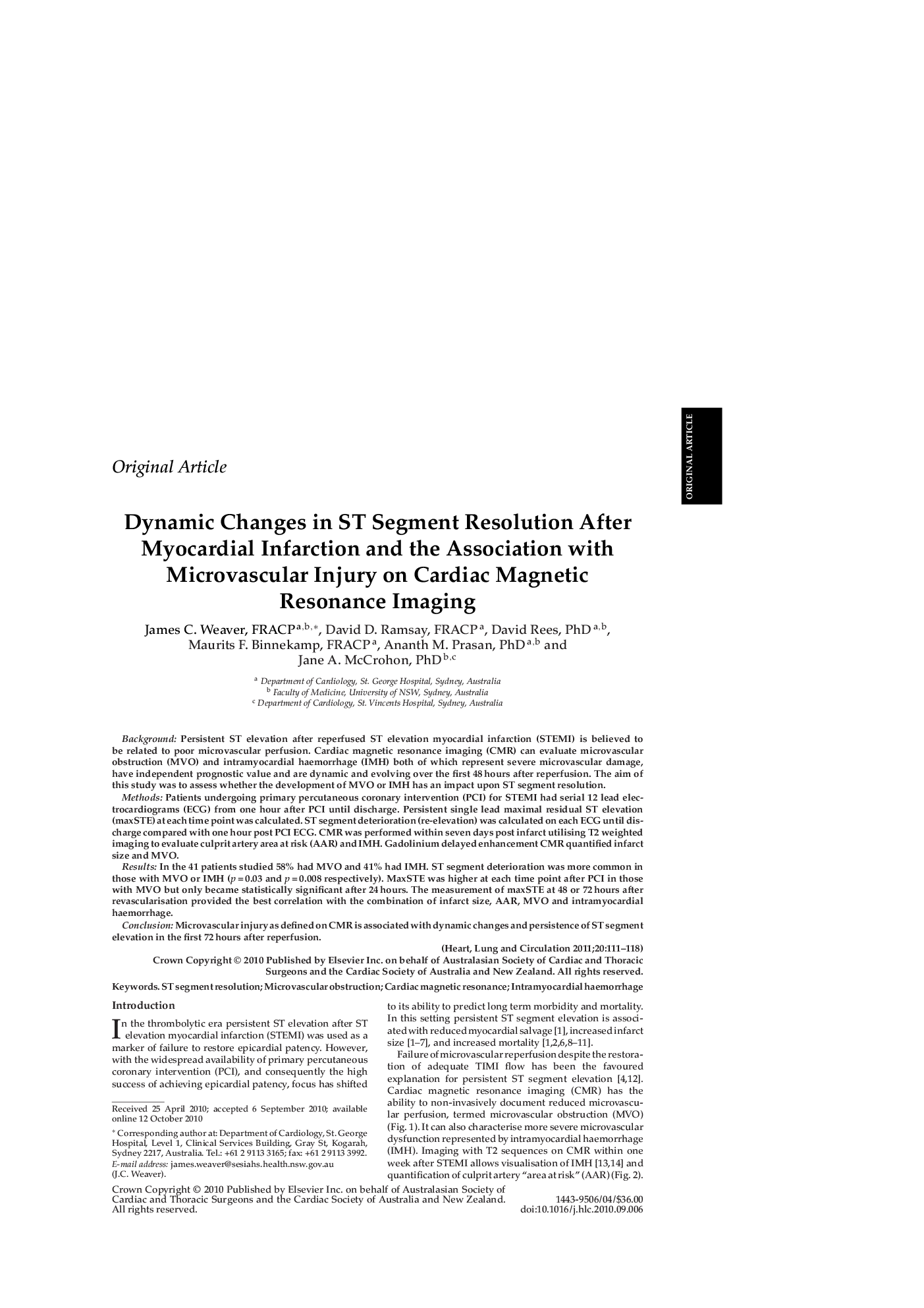| Article ID | Journal | Published Year | Pages | File Type |
|---|---|---|---|---|
| 2919628 | Heart, Lung and Circulation | 2011 | 8 Pages |
BackgroundPersistent ST elevation after reperfused ST elevation myocardial infarction (STEMI) is believed to be related to poor microvascular perfusion. Cardiac magnetic resonance imaging (CMR) can evaluate microvascular obstruction (MVO) and intramyocardial haemorrhage (IMH) both of which represent severe microvascular damage, have independent prognostic value and are dynamic and evolving over the first 48 hours after reperfusion. The aim of this study was to assess whether the development of MVO or IMH has an impact upon ST segment resolution.MethodsPatients undergoing primary percutaneous coronary intervention (PCI) for STEMI had serial 12 lead electrocardiograms (ECG) from one hour after PCI until discharge. Persistent single lead maximal residual ST elevation (maxSTE) at each time point was calculated. ST segment deterioration (re-elevation) was calculated on each ECG until discharge compared with one hour post PCI ECG. CMR was performed within seven days post infarct utilising T2 weighted imaging to evaluate culprit artery area at risk (AAR) and IMH. Gadolinium delayed enhancement CMR quantified infarct size and MVO.ResultsIn the 41 patients studied 58% had MVO and 41% had IMH. ST segment deterioration was more common in those with MVO or IMH (p = 0.03 and p = 0.008 respectively). MaxSTE was higher at each time point after PCI in those with MVO but only became statistically significant after 24 hours. The measurement of maxSTE at 48 or 72 hours after revascularisation provided the best correlation with the combination of infarct size, AAR, MVO and intramyocardial haemorrhage.ConclusionMicrovascular injury as defined on CMR is associated with dynamic changes and persistence of ST segment elevation in the first 72 hours after reperfusion.
